Hello there, fellow travellers!
Rome, the Eternal City, draws millions of visitors every year with its unparalleled history, art, architecture, and cuisine. But when is the best time to visit Rome? The answer depends on your preferences for weather, crowd levels, and budget. This comprehensive guide will help you decide the perfect time to explore this iconic city, plan your activities, and make the most of your trip.

Rome enjoys a Mediterranean climate, with warm, sunny summers and mild winters. As the average temperatures in Rome vary by season, it is important to check the typical climate for your travel dates.
Rome experiences its best weather and mild temperatures during the spring and fall, when the climate is comfortable and ideal for sightseeing. Knowing what kind of weather to expect can help you pack appropriately and plan your itinerary.
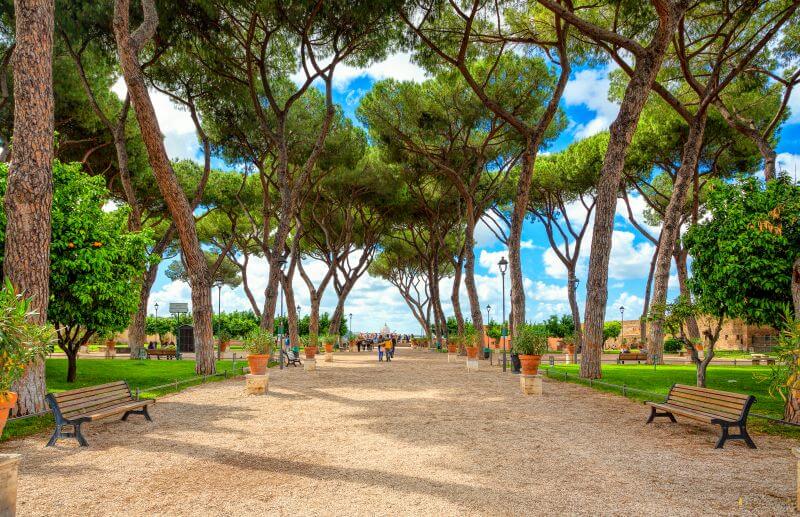
Season | Temperature Range | Characteristics |
|---|---|---|
Spring (March-May) | 12°C–22°C | Pleasant weather, blooming flowers, mild rains |
Summer (June-August) | 25°C–35°C | Hot, sunny, and crowded |
Autumn (September-November) | 15°C–25°C | Pleasant weather, crisp, golden foliage, fewer tourists |
Winter (December-February) | 3°C–12°C | Cool, fewer crowds, festive atmosphere |
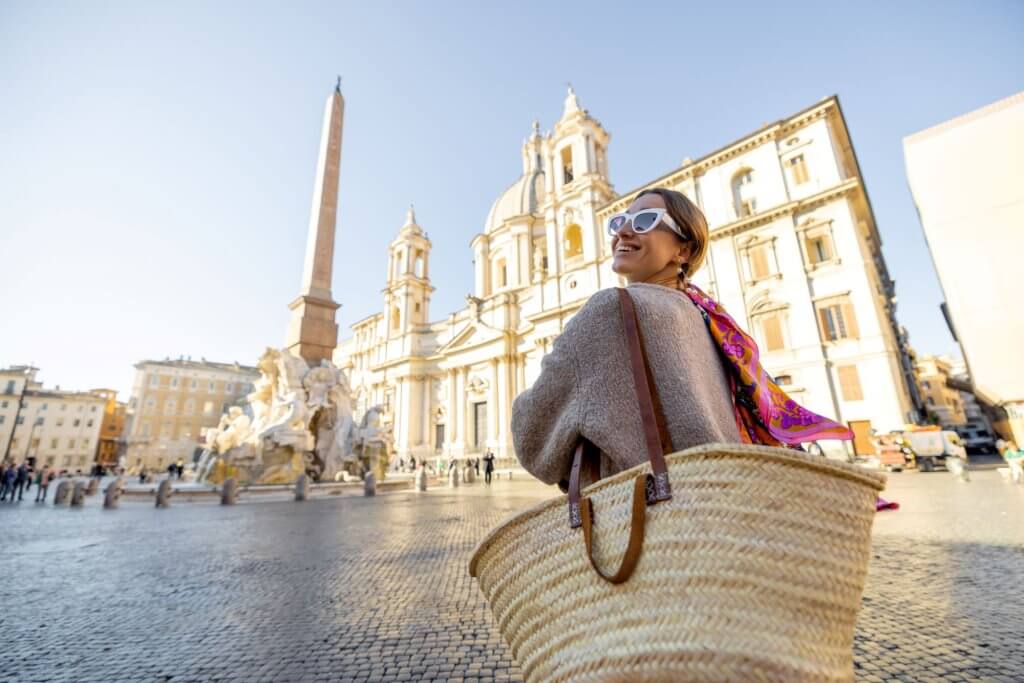
The best months to visit Rome are April, May, September, and October. These shoulder-season months bring sunny, mild weather (ideal for walking tours) and fewer crowds compared to the summer months. Visiting during these months means you can enjoy top attractions and famous sights like the Colosseum and Vatican with a better experience – less waiting and more time to explore.
April & May: Spring is stunning in Rome. The city’s parks and gardens are in full bloom, creating vibrant and colorful scenery. Outdoor cafés buzz with life. Perfect for visiting the Colosseum or strolling through the Villa Borghese gardens.
September & October: Autumn features warm, golden days and cool evenings. These months are ideal for exploring historic landmarks like the Roman Forum or taking day trips to nearby Tuscany. During autumn (fall), you’ll also find shorter lines at attractions, making sightseeing more enjoyable.

If you’re looking for the most budget-friendly time to visit Rome, consider travelling in January or February. These are the low-season months, and you’ll find that you can save money by taking advantage of lower prices on accommodations and flight deals. Traveling during this period often means more affordable airfare, hotel prices, and overall travel costs.
Lower Airfares: Flights to Rome drop significantly after the New Year’s holiday, and you can often find special flight deals.
Discounted Accommodation: Hotels and B&Bs often offer off-season hotel rates and lower hotel prices, making your stay much more affordable.
Shorter Queues: Major attractions like the Vatican Museums and the Pantheon are much quieter.
A sample budget for a low-season trip (as of November 2025):
Hotel Room (3-star): €100/night (≈ 115 USD) – less with special off-season offers
Flights starting from approx. € 350 (≈ 400 USD)
Entry to the Colosseum: €18 (≈ 19 USD)
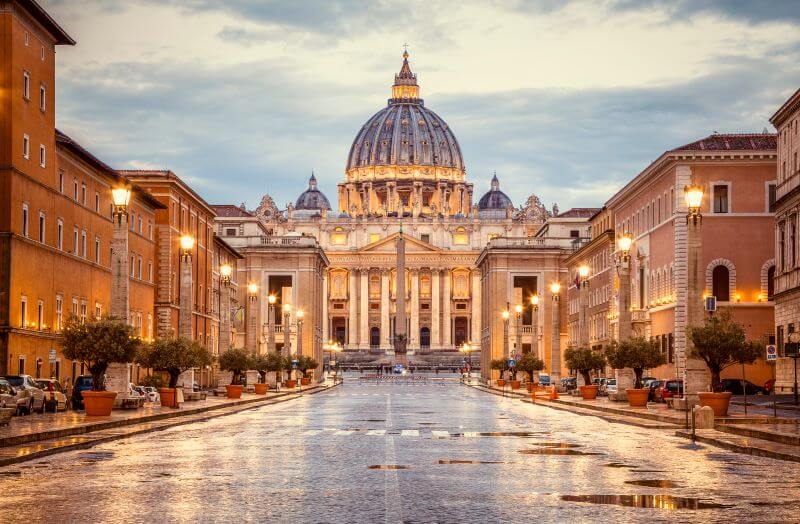
Rome’s rainiest months are typically November and December, with November being the wettest month. Showers are brief but can be heavy, making an umbrella or waterproof jacket a must. However, the city takes on a romantic charm during this time, and indoor attractions like the Vatican Museums are splendid options.
Early November marks the transition into the rainy season, bringing fewer crowds and slightly shorter hours at attractions, making it a suitable time for travelers seeking a less busy experience.
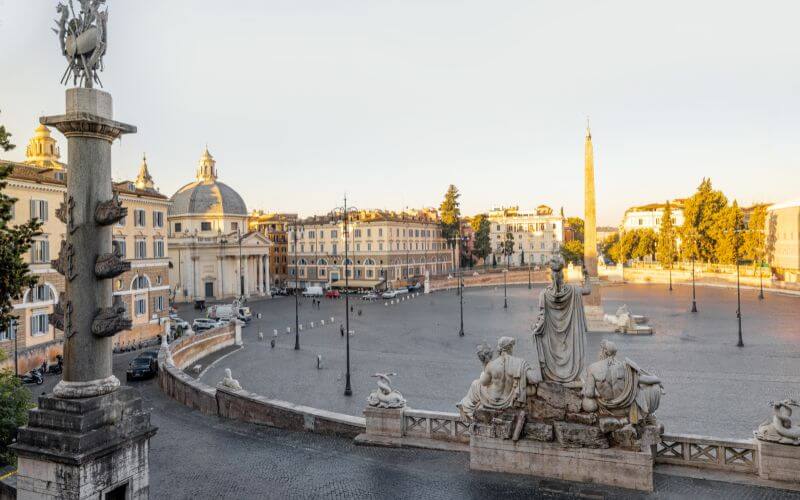
Packing for Rome requires careful planning, as the weather and activities vary significantly across the seasons. Here’s what you’ll need to make the most of your trip, no matter when you visit:
Spring is a popular travel season in Rome, known for its mild weather and blooming gardens. Really, spring is the ideal time to visit, but rain showers are common, so be prepared!
Comfortable walking shoes (for cobblestone streets).
Light jacket or cardigan for cooler mornings and evenings.
Umbrella or compact raincoat for sudden rain showers.
Sunglasses and sunscreen (the sun can get strong by late spring).
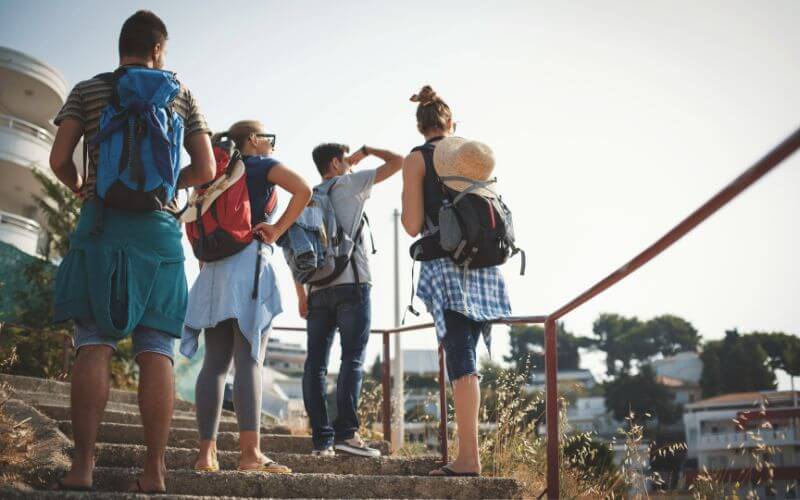
July is typically the hottest month in Rome, with high average temperatures and intense summer heat, so pack light clothing and stay hydrated.
Breathable fabrics like cotton or linen.
Sun hat or cap to protect against the summer heat.
Refillable water bottle (use Rome’s free drinking fountains).
Sandals or comfortable open-toed shoes.
Light scarf or shawl for modesty when entering churches.

Autumn is an ideal time to visit due to mild temperatures that make walking tours comfortable and enjoyable. In late September, visitors can take advantage of fewer crowds, excellent sightseeing opportunities, and experience the grape harvest season in Italy’s renowned wine regions. This period also offers the chance to enjoy seasonal dishes featuring autumn ingredients like truffles and chestnuts.
Layered clothing (light sweaters, long-sleeved shirts).
Waterproof shoes or boots, especially in November.
Light jacket or coat for when temperatures dip.
Travel umbrella for occasional rain.
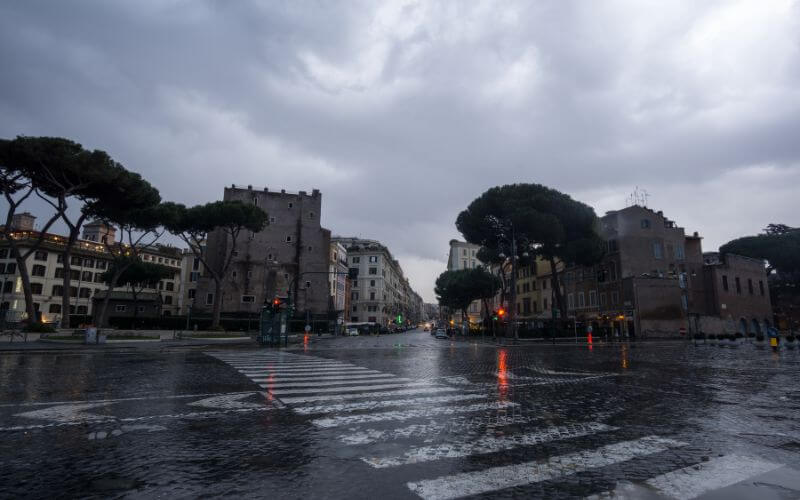
The winter months in Rome are a quieter time, making it ideal for a winter trip with fewer tourists and a more relaxed atmosphere. Winter in Rome is cool but rarely freezing, and snowy conditions are very rare. However, visitors should still pack for cold and wet weather.
Warm coat or jacket.
Scarf, gloves, and a beanie for colder days.
Comfortable waterproof boots for rainy days.
Layers (sweaters, thermals) for warmth.
Travel-size hand warmers for outdoor activities.
If weather is your priority, April, May, September, and October are the best months for Rome, offering plenty of sunny days. These months offer pleasant temperatures for outdoor exploration and plenty of sunshine for sightseeing and alfresco dining.
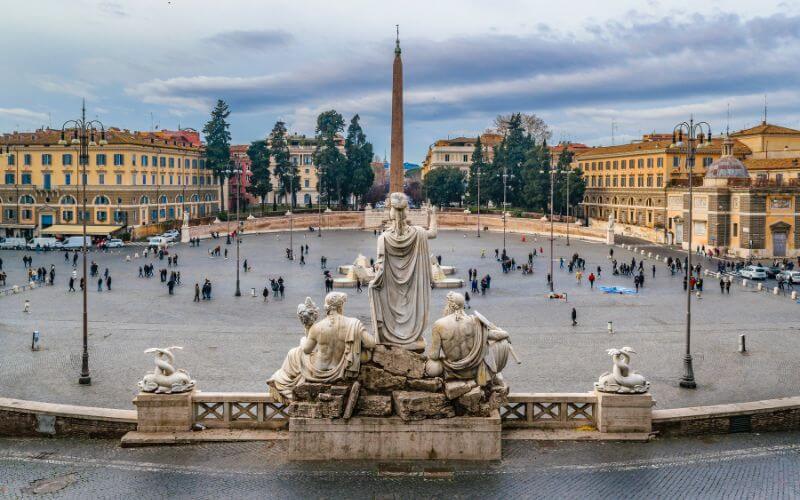
To experience the highlights of Rome, 4–5 days is ideal, giving you enough time to explore the city’s most famous landmarks and must-see attractions. Here’s a suggested itinerary:
Of course, this itinerary can be easily expanded – Rome offers countless attractions, tours, and hidden gems that cater to every interest, from art and history to gastronomy and modern culture. Whether you add guided experiences, explore lesser-known neighbourhoods, or join themed tours, there’s always more to discover in the Eternal City – making your visit truly unforgettable.
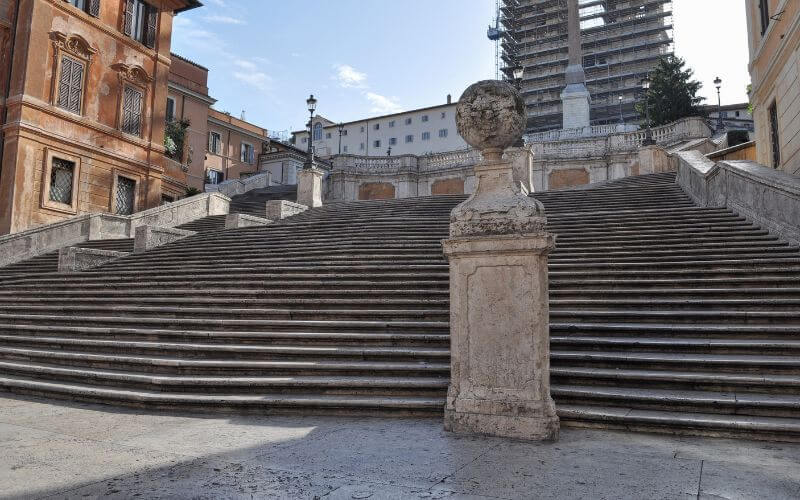
Crowds in Rome reach their highest levels during the summer months (June–August). During this time, tourist crowds are especially large around major attractions. Here’s how to avoid them:
Visit during low season (November–March) or shoulder seasons (April–June, September–October).
Arrive at popular sites early in the morning or late afternoon.
Explore lesser-known neighbourhoods like Testaccio or Monti for a more local experience.
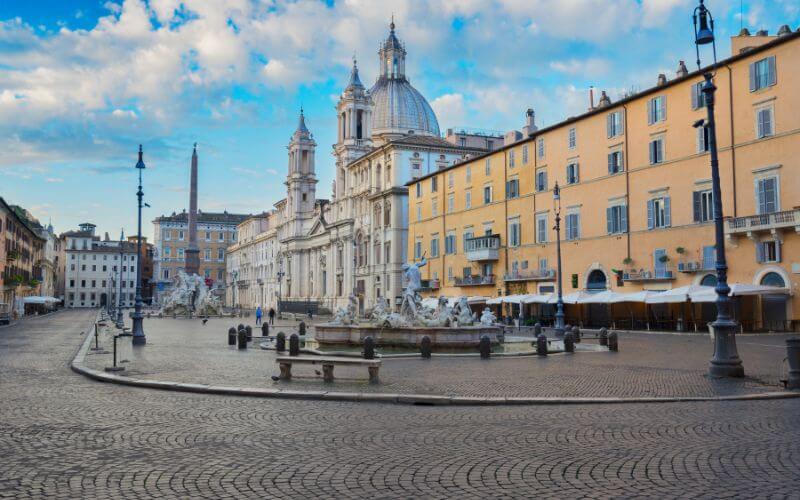
Travelling to Rome with kids? The Eternal City is full of family-friendly activities, but planning ahead is key to ensuring your trip is enjoyable for all ages. Exploring the city’s landmarks and soaking in the local atmosphere together can make your family adventure truly unforgettable. Here are some tips for a smooth and memorable family adventure:
Villa Borghese Gardens: Rent bikes or pedal boats and enjoy the city’s most famous park.
Piazza Navona: Let the kids marvel at the fountains while you sip a cappuccino nearby.
Janiculum Hill: Enjoy panoramic city views and a puppetry show at the Gianicolo Puppet Theatre (Teatro dei Burattini).

Rain doesn’t have to ruin your plans! Rome has plenty of indoor attractions to keep kids (and adults) entertained:
Explora – The Children’s Museum of Rome: A hands-on museum designed for children aged 0–12. It features interactive exhibits about science, ecology, and everyday life, making learning fun through play.
Location: Via Flaminia, 80
Opening Hours: Wednesday–Sunday, 10:00 AM–6:00 PM
Tickets: Approx. €7–11 per child (≈ 8–12.50 USD) as of November 2025.
Welcome To Rome – The Immersive Experience: Take a fascinating multimedia journey through the city’s 2,700-year history. This engaging experience combines 3D projections, light effects, and surround sound to bring Rome’s evolution—from ancient times to the present day—to life. It’s perfect for families wanting to understand how the Eternal City became what it is today.
Location: Corso Vittorio Emanuele II, 203
Opening Hours: Daily, 9:00 AM–7:00mPM
Tickets: Approx. €12–15 per person (≈ 14–17 USD).
Alternatively, Leonardo da Vinci Experience Museum offers an inspiring look at the genius of Leonardo da Vinci through life-sized models of his inventions, detailed replicas of his artworks, and interactive displays.
Location: Via della Conciliazione, 19 (near St. Peter’s Basilica)
Opening Hours: Daily, 9:00 AM–7:30 PM
Tickets: Approx. €10–13 per person (≈ 11–14 USD).
These engaging indoor experiences make even a rainy day in Rome part of your Italian adventure.
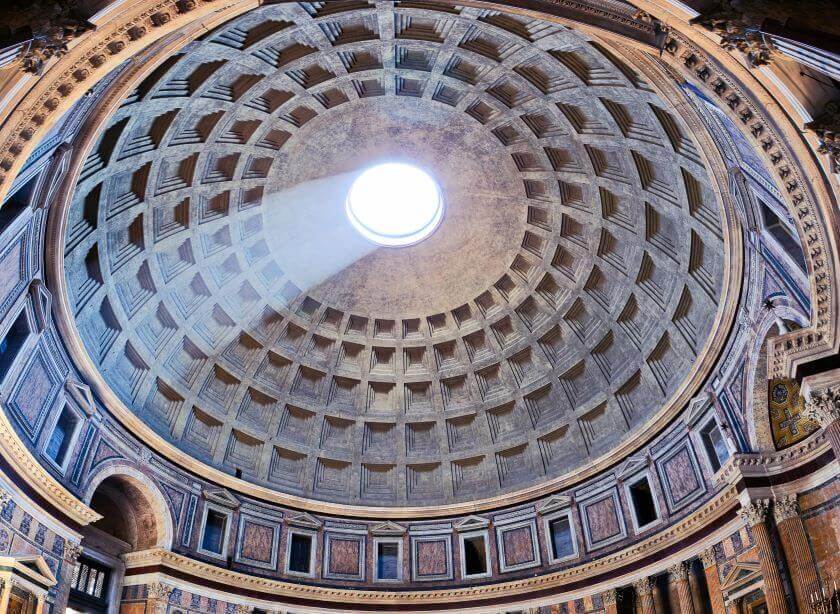
If your family prefers shorter activities to avoid being outdoors for too long, here are a few quick and engaging ideas:
Tip: Book skip-the-line tickets to minimise waiting time.
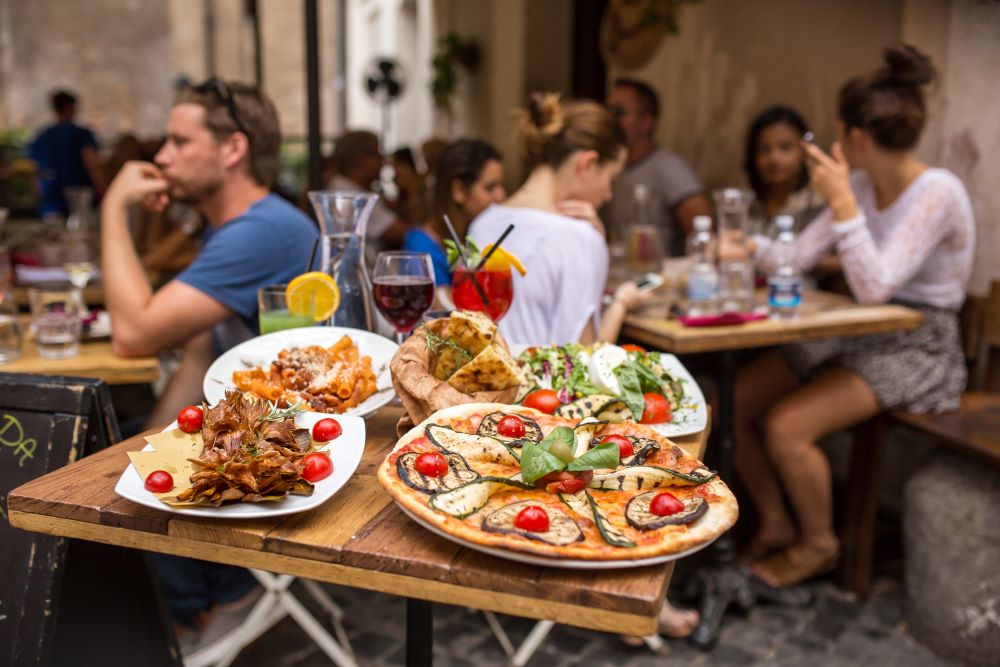
Trastevere Neighbourhood: Many family-run trattorias offer simple, kid-friendly dishes like pizza, pasta, and gelato.
Eataly Rome: A large food hall with Italian specialities, plenty of dining options, and a relaxed atmosphere for families.
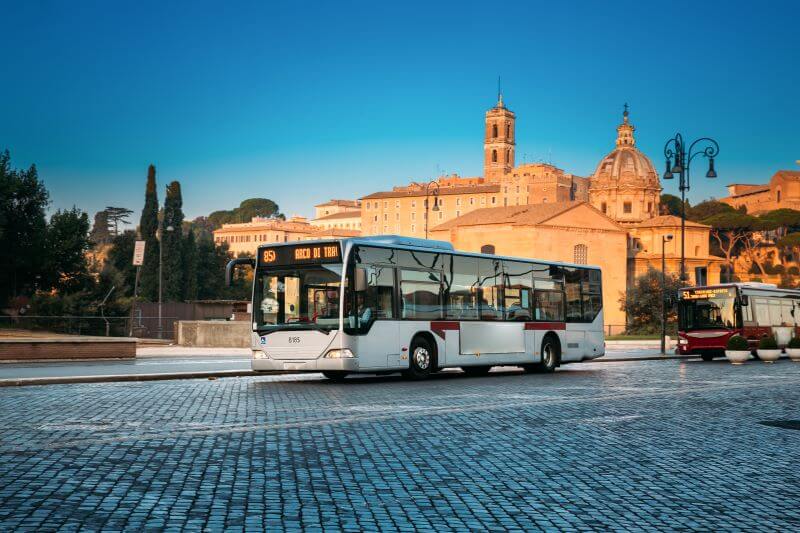

Rome is alive with cultural and religious events throughout the year. Planning your trip around these can enhance your experience:
Easter Week (March/April): Witness the Pope’s blessing at St. Peter’s Square and experience the heightened religious atmosphere during this important period.
Carnival (late February/early March): Enjoy vibrant Carnival celebrations, with festive parades and events, especially if you visit during late February or early March.
Rome Film Fest (October): Celebrate cinema at this prestigious event.
Christmas and New Year (December): Enjoy festive lights, Christmas markets, and midnight Mass at the Vatican.
Consider planning your Roman holiday around these key events for a truly memorable experience.
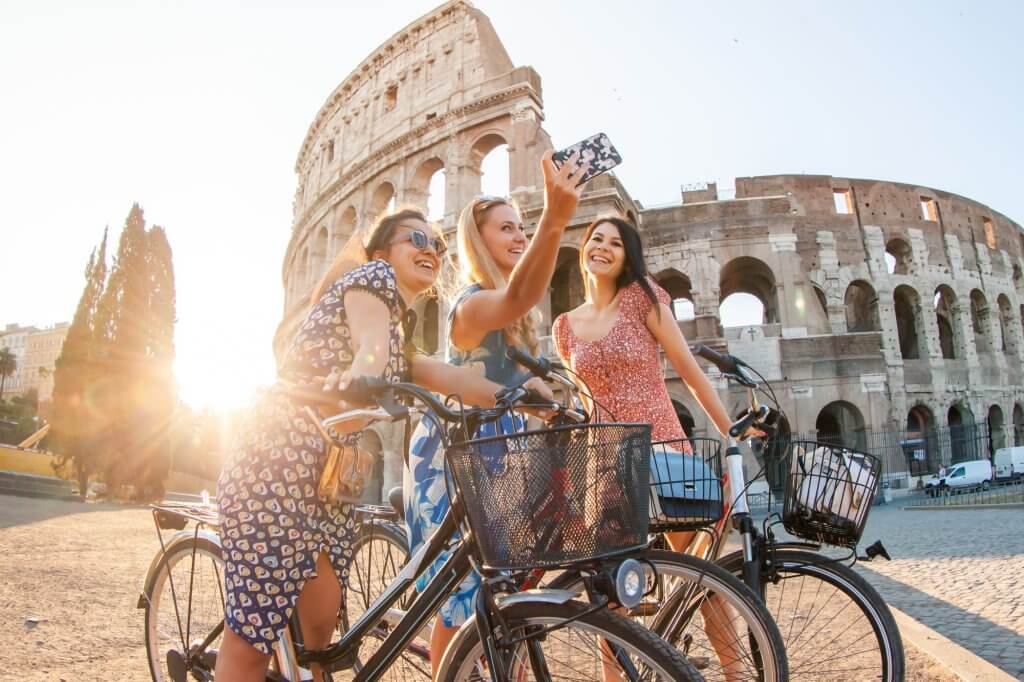
Booking: Reserve tickets for major attractions like the Colosseum and Vatican Museums in advance to skip the lines.
Transport: Buy a Turbopass City Pass for unlimited public transport and attraction entry.
Safety: Pickpocketing can occur in crowded areas – keep your belongings secure.
To make your stay even smoother, consider getting the Rome City Pass by Turbopass. It’s the easiest way to explore the city while saving both time and money. The pass gives you free entry to top attractions, including the Colosseum and Vatican Museums, and includes unlimited use of public transport throughout Rome. You can also enjoy priority access at many sights, meaning less time waiting and more time discovering. With everything organised in advance and one digital pass for your whole trip, you can experience Rome comfortably, flexibly, and at your own pace – the perfect companion for your Roman adventure.
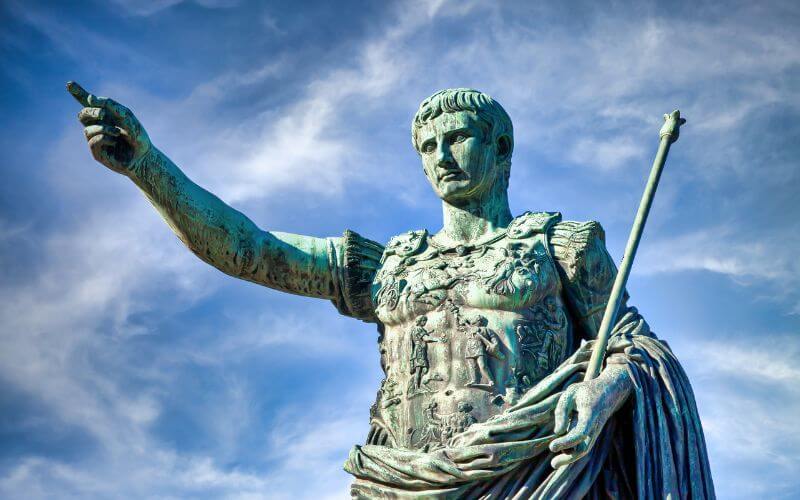
Rome is a city that offers something for everyone, from foodies and history buffs to art lovers and architecture enthusiasts. Whether you prefer sunny strolls through ancient ruins or quiet museum visits in winter, there’s no bad time to visit. The key is to plan according to your preferences and enjoy every moment in this timeless city.
Rome has 280 fountains scattered across the city, many of which are still fed by ancient aqueducts!
PS: The Italian capital stands out for its rich history and vibrant culture, but each of Italy’s cities – like Florence, Venice, and Naples – offers a unique travel experience, with varying crowd levels and seasonal highlights. After exploring Rome, consider extending your trip to these destinations to experience more of Italy’s beauty, diversity, and flair. Turning your visit into a broader Italian journey makes for an even more unforgettable adventure.